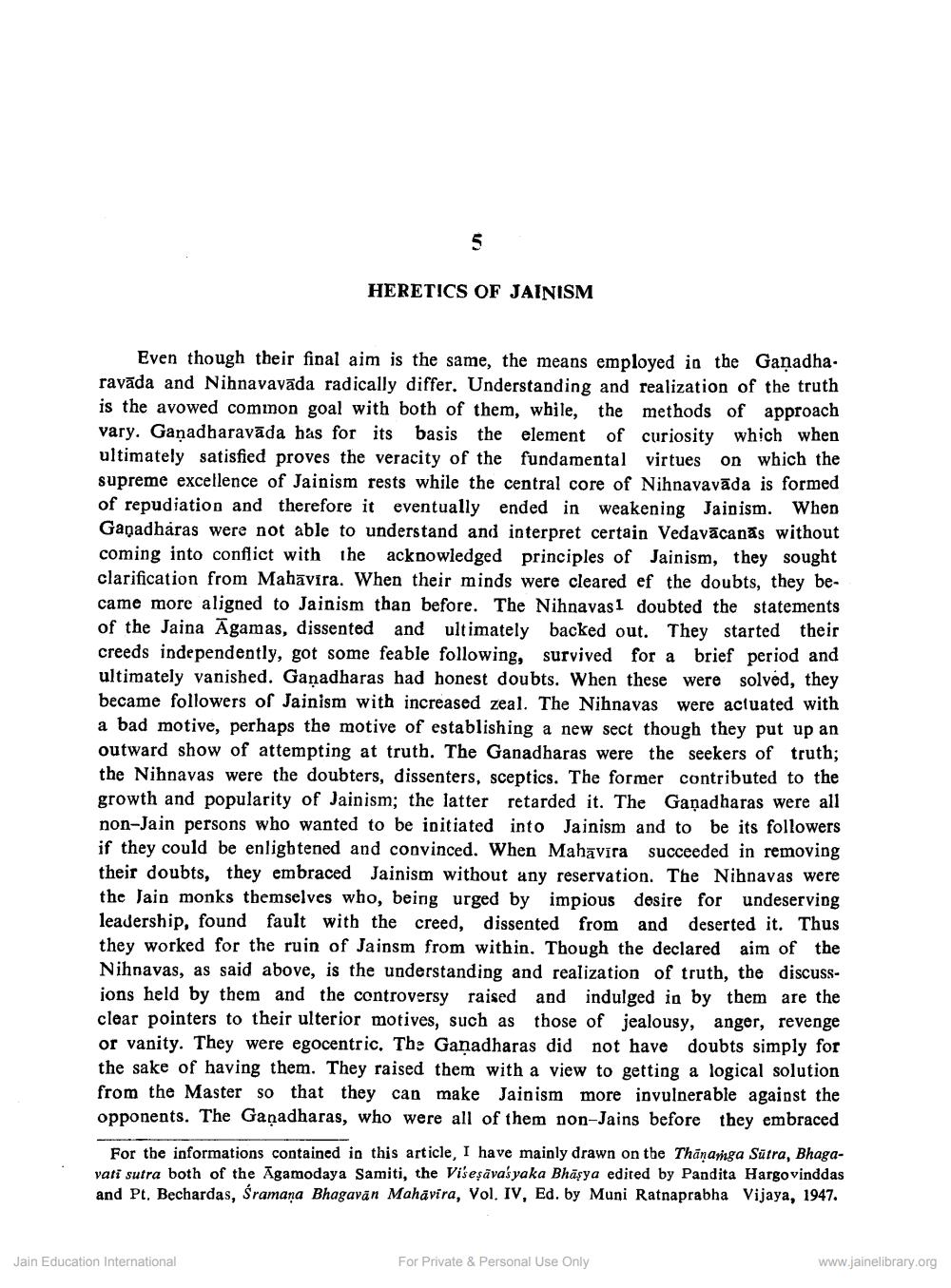________________
HERETICS OF JAINISM
Even though their final aim is the same, the means employed in the Ganadha. ravāda and Nihnavavāda radically differ. Understanding and realization of the truth is the avowed common goal with both of them, while, the methods of approach vary. Gañadharavāda has for its basis the element of curiosity which when ultimately satisfied proves the veracity of the fundamental virtues on which the supreme excellence of Jainism rests while the central core of Nihnavavāda is formed of repudiation and therefore it eventually ended in weakening Jainism. When Gagadharas were not able to understand and interpret certain Vedavācanās without coming into conflict with the acknowledged principles of Jainism, they sought clarification from Mahāvīra. When their minds were cleared ef the doubts, they became more aligned to Jainism than before. The Nihnavas1 doubted the statements of the Jaina Āgamas, dissented and ultimately backed out. They started their creeds independently, got some feable following, survived for a brief period and ultimately vanished. Ganadharas had honest doubts. When these were solved, they became followers of Jainism with increased zeal. The Nihnavas were actuated with a bad motive, perhaps the motive of establishing a new sect though they put up an outward show of attempting at truth. The Ganadharas were the seekers of truth; the Nihnavas were the doubters, dissenters, sceptics. The former contributed to the growth and popularity of Jainism; the latter retarded it. The Gañadharas were all non-Jain persons who wanted to be initiated into Jainism and to be its followers if they could be enlightened and convinced. When Mahāvīra succeeded in removing their doubts, they embraced Jainism without any reservation. The Nihnavas were the Jain monks themselves who, being urged by impious desire for undeserving leadership, found fault with the creed, dissented from and deserted it. Thus they worked for the ruin of Jainsm from within. Though the declared aim of the Nihnavas, as said above, is the understanding and realization of truth, the discussions held by them and the controversy raised and indulged in by them are the clear pointers to their ulterior motives, such as those of jealousy, anger, revenge or vanity. They were egocentric. The Ganadharas did not have doubts simply for the sake of having them. They raised them with a view to getting a logical solution from the Master so that they can make Jainism more invulnerable against the opponents. The Gañadharas, who were all of them non-Jains before they embraced
For the informations contained in this article, I have mainly drawn on the Thānanga Satra, Bhagavati sutra both of the Āgamodaya Samiti, the Viseşāvas yaka Bhäsya edited by Pandita Hargovinddas and Pt. Bechardas, Šramana Bhagavan Mahavira, Vol. IV, Ed. by Muni Ratnaprabha Vijaya, 1947.
Jain Education International
For Private & Personal Use Only
www.jainelibrary.org




